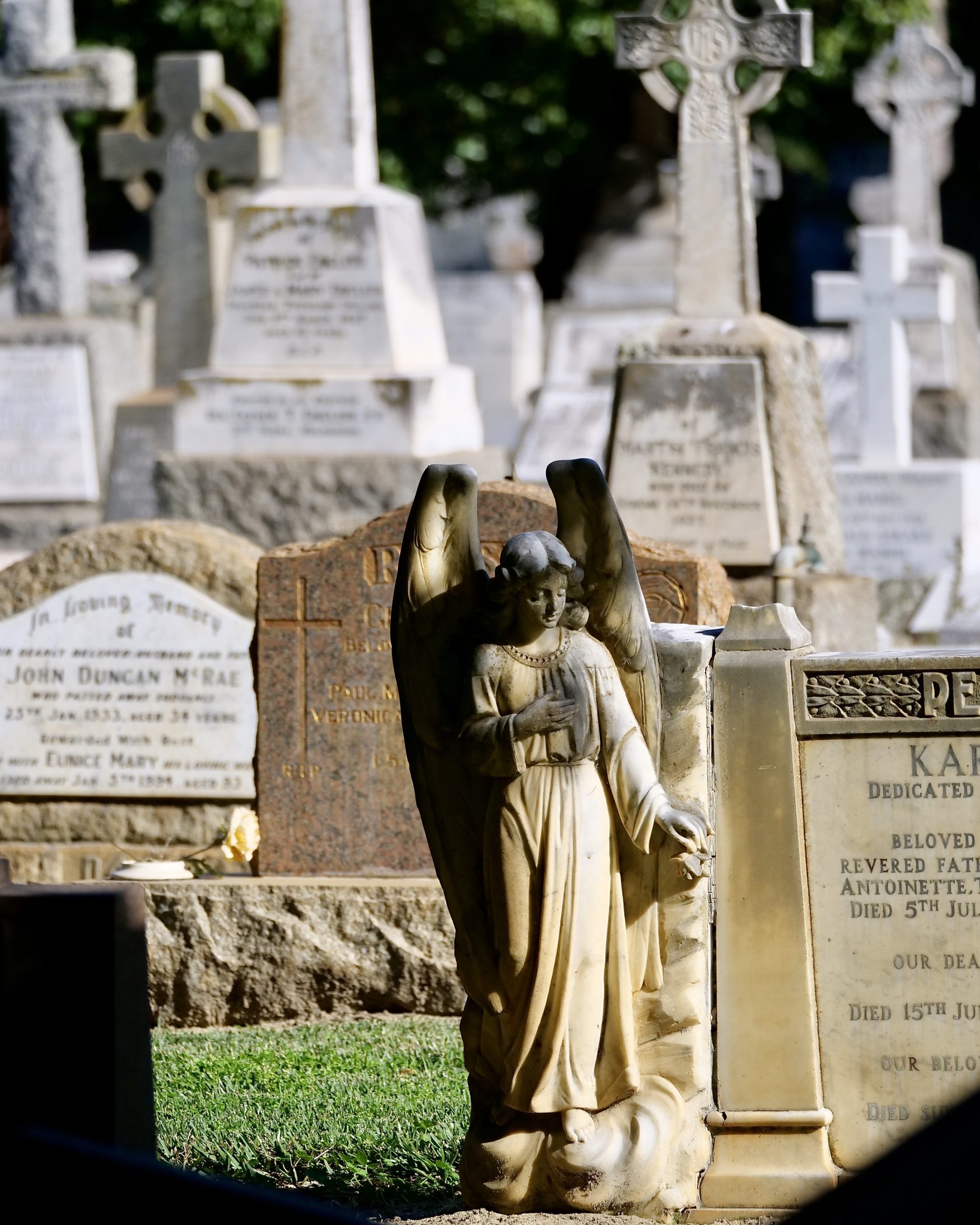Visitor numbers to Karrakatta Cemetery exceed one million per year.
Even if you have no funerals to attend, and none of your particular loved ones have been buried or cremated there, Western Australia’s largest cemetery is a richly rewarding destination.
This is most especially true on a non-gloomy winter’s day.
Most visitors over the last eighty years or so would be surprised to discover that for its first few decades Karrakatta Cemetery was remarkably primitive, very difficult to reach, and poorly/barely managed.
(East Perth and Fremantle both had well-established cemeteries long before Karrakatta was even envisaged. It is, I think, Australia’s third or fourth largest cemetery, and the biggest outside Sydney and Melbourne)
In 1917 – 18 years after it had officially opened for burials – this cemetery was described as “a thoroughly disgraceful affair.”
A couple of decades later, Karrakatta had become what it remains – a well-ordered cemetery and a fine urban park, very easily reached via road or rail.
In July 1945 Prime Minister John Curtin’s funeral brought more than 30,000 people to Karrakatta – then, a deal more than 10% of the Perth metro area’s population.
(many thousands more lined Perth streets, en route to the funeral)
Within Karrakatta Cemetery’s 98 hectares you can walk comfortably on more than 40 kilometres of roads and paths.
Even if its considerable “heritage significance” holds no interest, Karrakatta should be on any tree-lover’s or bird-lover’s “must visit” list.
For a succinct history, click this.
Click here for Wikipedia entry, which links to various other Karrakatta sites.
Photo is copyright Doug Spencer, taken at 1.59 pm on 01 July 2022.
